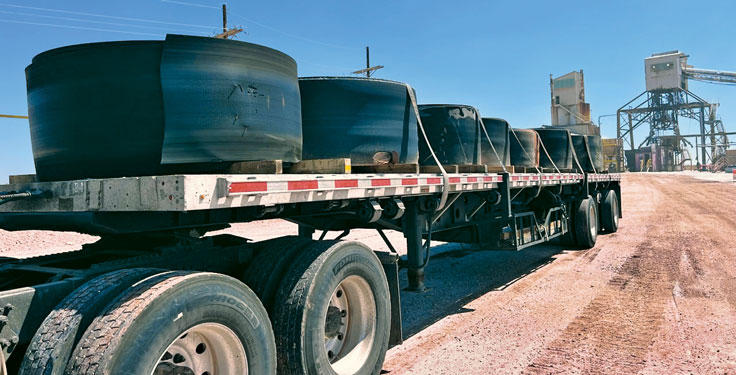The recycling conveyor belt model by EZA Recycling Solutions involves the use of third-party trucking services to transport rolls from aggregate operations. Every aggregate operation utilizes conveyor belts, each with a limited lifespan. Traditionally, old belts were discarded in scrap piles on-site, eventually ending up in landfills, contributing to waste accumulation and visual pollution.
Greg Failes from US Aggregates highlights the historical practice of discarding old belts, leading to clutter and inefficiency on properties. However, there is a shift towards recycling these belts in response to environmental concerns and a desire for responsible waste disposal practices.
Producers like US Aggregates and Michels Road & Stone are embracing recycling initiatives, aiming to divert materials from landfills. Michels Road & Stone, as part of sustainability programs, repurposes scrap belts for various applications like storm drain mats and equipment buffers. The growing interest in recycling conveyor belts reflects a broader industry awareness of sustainable options.
Ezekiel Setne, the founder of EZA Recycling Solutions, notes the evolution of recycling practices, particularly in the mining and aggregates sector. Initially a niche market, recycling conveyor belts has gained prominence over the years. Setne emphasizes the importance of proper recycling practices to avoid cherry-picking and ensure effective repurposing of materials.
Experiences with EZA Recycling Solutions have been positive for companies like US Aggregates and Michels Road & Stone. The process of offloading old belts was streamlined, involving rolling them up for shipment and coordinating with trucking services for transportation. Recycling scrap belts not only reduces clutter but also offers a sustainable alternative to landfill disposal.
Setne envisions a future where recycling potential is maximized across industries, emphasizing the need for improved recycling rates and waste management strategies. By focusing on industrial and commercial waste streams, opportunities for effective recycling and waste diversion can be optimized, paving the way for a more sustainable future.
